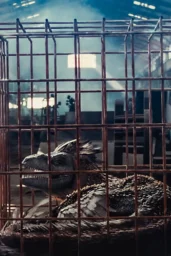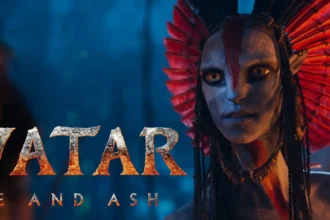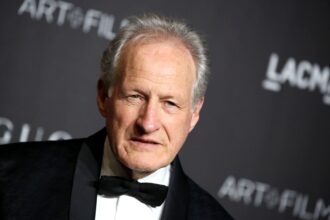Let’s be honest. We all felt it. That moment, about two hours and forty minutes into Avatar: The Way of Water, when you shifted in your seat, calculated the remaining bladder time, and had a silent, profound negotiation with your own comfort. It’s a Cameronian ritual at this point. And guess what? He’s not changing a thing.
In a recent chat with Variety, the maestro himself, James Cameron, all but confirmed that the upcoming “Avatar: Fire and Ash”—the third film in his planetary saga—sits comfortably at a running time of three hours. “And we’re at three hours, big surprise!” he said, with what I can only imagine was a wry, unrepentant grin. “But it works beautifully.”
Works beautifully. Of course it does. To him. This isn’t a director pandering to dwindling attention spans or the algorithm gods. This is a 70-year-old filmmaker who has spent decades bending the physical and technological laws of cinema to his will, now building his final, monumental sandcastles exactly as he pleases. The three-hour runtime isn’t an indulgence; it’s his signature. Gorgeous. Grating. Gorgeous again.
The Unflinching Math of Pandoran Epic
Now, a quick, necessary dose of reality—because in the world of blockbusters, the runtime is a financial and narrative statement. When Cameron casually drops “three hours,” he’s almost certainly talking about the feature itself, sans the 10-12 minutes of end credits that will inevitably list thousands of VFX artists. Do the math. We’re looking at a final product nudging 3 hours and 12 minutes, a carbon copy of The Way of Water.
Let’s stack them up, because the ambition is right there in the numbers:
- Avatar (2009): 162 minutes. A revelation. A world introduced.
- The Way of Water (2022): 192 minutes. A world deepened, a culture explored through a new biome.
- Fire and Ash (2025): ~180-192 minutes (projected). A world at war.
The scope is clearly expanding, the narrative threads multiplying. This isn’t a trilogy where part three neatly ties the bow. This is a man building a five-act opera on an interplanetary scale. You don’t do that with ninety-minute romps. The length is the point. It’s the commitment. It’s the hill he’s chosen to die on.
And it’s a gamble that, against all logic, keeps paying off. The Way of Water cost a soul-terrifying $400 million to produce and somehow became 2022’s most profitable film, raking in $2.3 billion worldwide. It also cemented Cameron as the only director in history to have three films in the top 20 highest-grossing of all time. The question hanging over Fire and Ash isn’t just about critical reception—it’s whether he can make it a fourth.
The Crossroads and the Certainty
What’s fascinating about the Variety interview isn’t just the confirmation of what we all expected; it’s the context. Cameron is, by his own admission, at a “crossroads.” He confirms his WWII passion project, The Last Train from Hiroshima, is still very much alive in his mind, but there’s no script. Not yet.
The future of the Avatar saga—and indeed, of Cameron’s own directorial path—rests squarely on the shoulders of Fire and Ash. A massive success? He likely marches straight into the uncharted territories of Avatar 4 and *5*. Soaring VFX costs and a shifting theatrical landscape? He might just take a breather, slot in The Last Train, or tackle something smaller.
Smaller. The word feels almost alien when applied to him.
But here’s the one certainty he offered, and it’s a relief to any cinephile: “I’ll keep directing.” Whatever form it takes, whatever scale it demands, the king of the world has no intention of abdicating his throne. He’s just deciding which kingdom to rule next.
The Ebert Principle and the Cameron Reality
All this talk of runtimes inevitably dredges up the ghost of the late, great Roger Ebert and his immortal line: “No good movie is too long and no bad movie is short enough.”
It’s the critic’s mantra, the audience’s shield. It’s also the perfect lens through which to view Cameron’s later-career obsession. His films are long, yes, but are they too long? The box office and the enduring cultural footprint of Titanic and the first Avatar suggest a resounding no. For him, the spectacle is in the detail. The emotional payoff is earned through immersion. You don’t just watch Pandora; you inhabit it for an afternoon. You come out feeling like you’ve been somewhere.
That’s the Cameron reality. He makes experiences, not just movies. And a three-hour experience, if it’s beautiful, if it’s grating, if it’s beautiful again, is exactly what he’s selling.
“Avatar: Fire and Ash” is scheduled for its own immersive, three-hour theatrical experience on December 19, 2025.
The Fire and Ash Dossier: What We Know
🧭 The Runtime Blueprint
James Cameron has confirmed a working cut of around three hours, placing it firmly in the same epic territory as The Way of Water.
🧭 The Cameron Crossroads
The director’s future is fluid. While he plans to direct the WWII film The Last Train from Hiroshima, its script isn’t written, and its timeline depends entirely on the success of Fire and Ash.
🧭 The Precedent for Profit
With a $400 million production budget, The Way of Water’s $2.3 billion gross proved the astronomical financial viability of Cameron’s vision, setting a daunting benchmark for this third installment.
🧭 The Release Date Lock
Mark your calendars. Pandora returns to the big screen on December 19, 2025. No delays, no surprises—for now.
So, what do you think? Are you ready to surrender another three hours to the wonders and, let’s be frank, the occasional labor of Pandora? Does the promise of a full-scale “fire and ash” war on a canvas this large excite you, or exhaust you? The comments, as always, are yours.
For a deeper dive into the world of Pandora, from its creation to its clans, check out our Complete Guide to the Avatar Universe.
Source: Variety Interview









